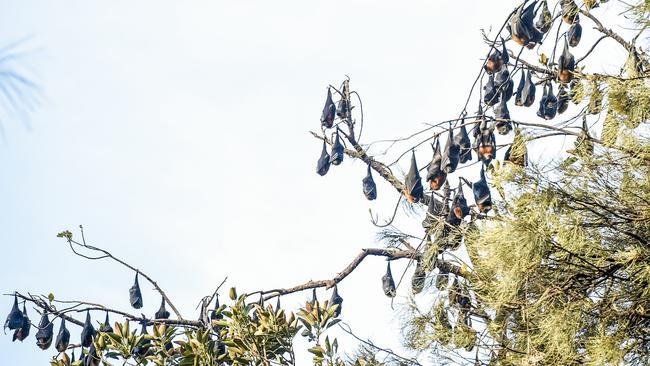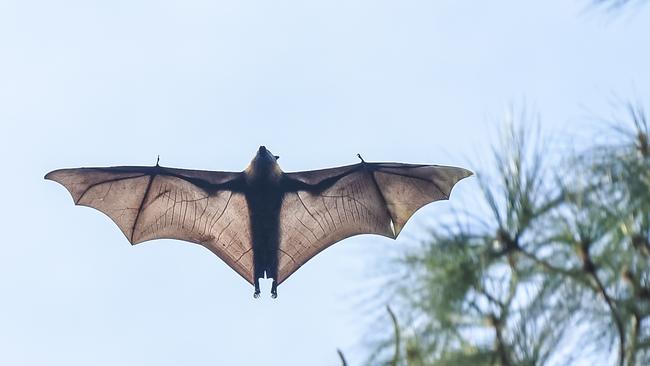Fruit bats from 30,000-strong colony at Botanic Park setting up breakaway camps across SA
Every night come sundown, thousands of fruit bats leave the upper reaches of trees in the Botanic Park. Now some are setting up new homes across SA.
City
Don't miss out on the headlines from City. Followed categories will be added to My News.
Flying foxes from the 30,000-strong colony in Botanic Park are starting to break away and set up new “bat camps” around the state.
About 4000 bats have set up camp in pine forest near Millicent in the state’s South-East.
Green Adelaide ecologist Jason Van Weenen said bat sightings in Port Augusta suggested there “may be camps in other parts of the landscape that we haven’t found”.
Mr Van Weenen said the Adelaide colony had grown to the point where it could now be expected to produce more new ones “at any time”.
“Certainly the camp is at a size now where we should be expecting to see something (more),” he said.
Research using tracking devices has shown the fruit bats often fly 20-30km from their home base into the suburbs and beyond in their nightly search for food and some stretch as far as 60km.
Signals have been detected as far away as Cape Jervis and “well north of Adelaide”, Mr Van Weenen said.

“Somewhere down south near Victor Harbor would make sense,” he said.
“It’s a decent area away from the current camp and there’s quite a lot of foraging resources down there. So that might be a place where you wouldn’t be surprised if a camp set up over time.”
Just after dusk every evening, the grey-headed flying foxes can be seen streaming out from their Botanic Park base, where they set up campafter migrating from interstate in 2010.
The bats can carry diseases, which is why there has been concern in previous summers over them succumbing to heatwaves and dropping dead out of trees in Botanic Park, where people have been warned not to touch them.
They have also been responsible for many blackouts, as their large wingspan of up to 1m makes them vulnerable to accidents with power lines and other electricity infrastructure.
Green Adelaide is working with Adelaide University and the University of Western Sydney to cool the Botanic Park camp during heatwaves and avoid the death toll from heat stress experienced in previous years.

The research team hopes to share the results interstate with others who might be thinking of installing camp-cooling infrastructure.
Mr Van Weenen said new sprinklers had been installed in and around the camp to “reduce the temperature higher in the (tree) canopy where a lot of the juvenile bats may be residing”.
“Once they start getting heat stressed, they start to spread across a larger footprint and that takes them all along the Torrens and around the university and all through the Botanic Gardens,” Mr Van Weenen said.
“Hopefully this will help contain them and help reduce the footprint of the colony during that those heat-stress times.”
Individual bats often return to the same food source each night, feasting on fruit such as apples, pears, cherries and figs or flowers from banksia or gum trees.
As well as the disease risk, live bats may scratch or bite when threatened.



